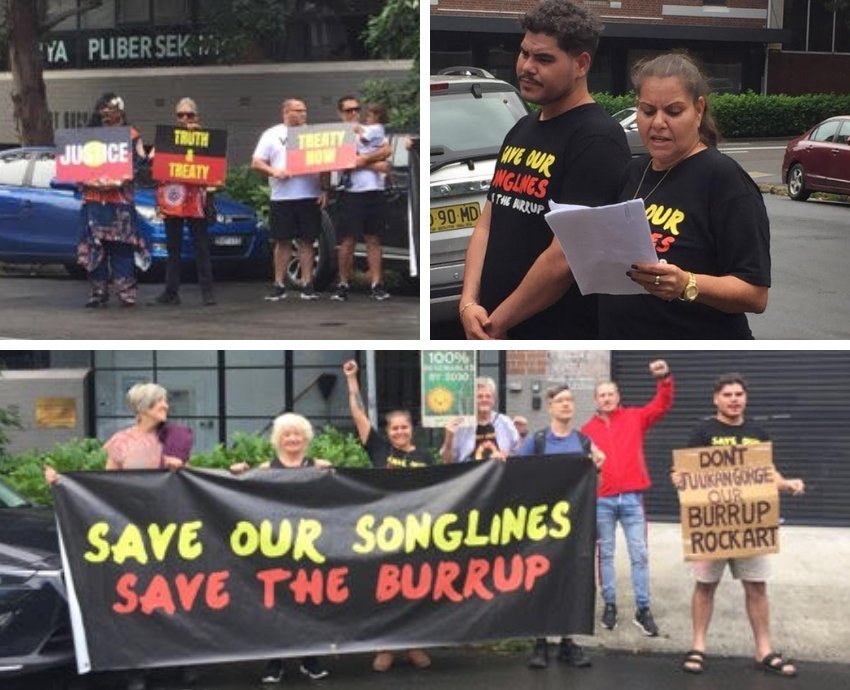
Murujuga Traditional Custodians escalated their campaign to protect Murujuga rock art in the Pilbara, Western Australia, by protesting outside federal environment minister Tanya Plibersek’s office in Sydney on March 2.
Raelene Cooper, Mardudhunera custodian and former chair of the Murujuga Aboriginal Corporation, and Mardudhunera custodian Mark Clifton spoke to reporters outside Plibersek’s office. “The prime minister and minister Plibersek march in the Gay Pride parade and trumpet their commitment to giving First Nations people a voice,” Cooper said. “But the minister won’t meet with us on her turf to discuss our concerns and hear our fears for our Ngurra — Country.”
The Burrup Peninsula, in the Pilbara’s northwest, is known as Murujuga to Traditional Custodians. It contains about 1 million pieces of rock art that are at least 80,000 years old — the biggest and oldest collection in the world.
Woodside’s Scarborough and Browse Basin gas projects threaten the Murujuga rock art. Woodside also plans to build a 1000-kilometre pipe under the ocean, taking liquefied natural gas (LNG) from the Kimberley to the Burrup for export.
Plibersek made international headlines recently by announcing the nomination of the Murujuga petroglyphs for UNESCO World Heritage listing, but has not ruled out Woodside’s projects that threaten First Nations’ culture and the climate. Woodside was responsible for the destruction of 5000 sacred rock art sites during the construction of earlier parts of the Burrup LNG project.
Plibersek also recently given permission to Santos for a 116-well coal seam gas project in the Surat Basin, Queensland.
Save Our Songlines — a First Nations organisation campaigning to save the Murujuga rock art — have called for a moratorium on further industrial development on Murujuga, under Section 10 of the Aboriginal and Torres Strait Islander Heritage Protection Act.